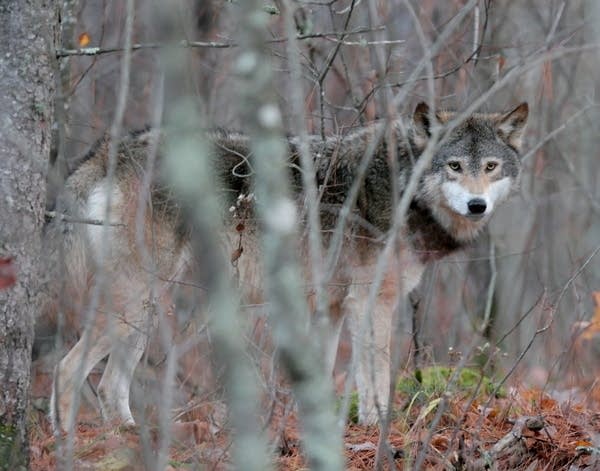Minnesota ranchers welcome more federal cash to stop wolves

There's a place just east of Nimrod where the trees and prairie meet. There's tamarack bog, miles of rusting barbed wire and pastureland where angus beef cows graze. The locals call it Eden — for wolves.
"They start feeding on cattle, because it's easy for them and they taste good," said area cattle rancher Chuck Becker. "Wolves come here, and they pretty much don't leave if they don't have to."
Becker's lost dozens of cattle over the last 20 years, and there's not much he can do about it. Only trappers working for the United States Department of Agriculture can kill the wolves. And for a few weeks this fall, the federal trappers couldn't do their jobs. They didn't have the money.

They had to stop trapping on Oct. 13, said John Hart, USDA's regional wildlife specialist. Every year his office gets enough funding, about $220,000, to trap roughly 200 wolves. This year, they burned through that money quickly.
Create a More Connected Minnesota
MPR News is your trusted resource for the news you need. With your support, MPR News brings accessible, courageous journalism and authentic conversation to everyone - free of paywalls and barriers. Your gift makes a difference.
"Large family groups of wolves need more protein," Hart said. "They often turn to domestic animals. That's what we saw this year."
A recent Minnesota Department of Natural Resources survey found a big increase in the state's wolf population. There are now approximately 500 packs, and more than 2,800 wolves across the northern half of the state, about a 25 percent increase from last year.
Minnesota's wolf population had been stable in four prior surveys. The DNR said the increase since 2015-2016 was consistent with a continuing increase in the deer population in wolf country. Minnesota's wolf population remains well above the state's minimum goal of at least 1,600 wolves; it's also above the "federal recovery goal" of 1,251 to 1,400, according to the DNR.
Minnesota U.S. Sens. Amy Klobuchar and Al Franken asked USDA for more money for the trap-and-kill program. Hart's team is funded now through the end of the year, although the agency didn't disclose the additional dollar amount.
Rancher Doug Kuschel believes keeping the trapping program funded is vital. His ranch is a few miles north of Becker's. Late last fall a pack of five wolves took one of his older steers.

"He was kind of an old rogue steer," Kuschel said. "He didn't like to travel with the herd, and that was his mistake."
Kuschel called the federal trappers, but they couldn't help because the money was gone. Kuschel had to wait, and watch the wolves scope out his herd all winter long.
"It's like a time bomb," he said. "With the wolves, you know you're going to get nicked again."
Even with emergency federal funding, Becker doesn't think wolf management is working. He used to work as a state sanctioned wolf trapper. When his neighbors lost cows, he got the call. It was effective, he said, and less expensive than the federal program.
In 2014, a federal ruling put Minnesota wolves back on the endangered species list. Becker hung up his gear. Dozens of blackened leg traps still dangle from drag chains in his barn.
The system needs to be changed, he said, and some state wildlife officials agree.
The wolf population is strong enough, said DNR large carnivore specialist Dan Stark.
Stark said he isn't calling for reopening the wolf hunt, which has been controversial in the past, but he noted that Minnesota's wolves, long considered a threatened species, now roam in numbers twice as large as state managers ever hoped for. He said he hopes ranchers will get more freedom to handle their own wolf problems.
"We can't continue to have them listed under the endangered species act indefinitely," Stark said. "We should recognize that this has been a success, and we should move on to a more long-term conservation strategy."